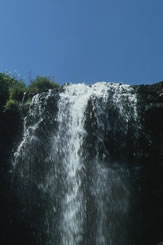 Development, Application and analysis of Raman, fluorescence and absorption spectroscopy using optical fibre remote sensing of chemical species in water for in situ environmental pollution studies in Cyprus, Israel, Italy and the United Kingdom
Development, Application and analysis of Raman, fluorescence and absorption spectroscopy using optical fibre remote sensing of chemical species in water for in situ environmental pollution studies in Cyprus, Israel, Italy and the United Kingdom
- The main objective of the joint research programme was the development,
testing and application of a real time, remote mobile sensing platform,
combining Raman, fluorescence, and absorption spectroscopy with current
optical fibre technology, for the identification of hazardous chemical
species in water.
- Techniques to enhance sensitivity and analyte selectivity, such as solid
phase micro-extraction and neural network post processing, were to be
evaluated. Areas of particular concern are the contamination of potable and
agricultural water resources; sea and river water contamination from coastal
and inland petroleum installations; the monitoring of effluent dispersal
from industrial processes and the contamination of the water table arising
from chemical leakage of ageing storage facilities
| Project number | IC18-CT-1997-0171 | ||
|---|---|---|---|
| Subject(s) | ENERGY , INFORMATION - COMPUTER SCIENCES , no translation available , no translation available | ||
| Acronym | RAMAN | ||
| Geographical coverage | Cyprus, Israel, Italy, United Kingdom | ||
| Budget (in €) | 360000 | ||
| Programme | INCO MED (FP4) | ||
| Objectives |
1. Realisation of a real time, in situ and chemically specific
technique combining both Raman fluorescence and absorption spectroscopy in a
single instrument, suitable for detecting multi-component mixtures having
low signal to noise ratios, and colouration in water. 2. Evaluation and combination of novel, high light gathering optical probes with current optical fibre technology coupled to high powered diode laser sources for the Raman technique and high powered broad band sources for fluorescence and absorption measurements. The multiplexing of many probes to the single detection platform. 3. Investigation of polymer concentrators (such as the polydimethylsiloxanes) and reagent loaded sol-gels for the enhancement of pollutant selectivity; pollutants of particular interest are the polycyclic aromatic hydrocarbons (PAHs), the BTEX compounds and heavy metals (Pb, Cu, Fe). 4.The use of neural network post processing software to provide accurate information on multi- component sample composition for signal-to-noise ratios of less than one. 5. Identification of pre-set site parameters for periodic / continuous in situ measurements using the mobile sensor and the generation of an extensive data base from which trends in water quality changes can be used to predict ambient pollutant concentrations. 6.Training of young scientist in various aspects of optical spectroscopy, design of remote spectroscopic probes, computer control of instrumentation, data collection and presentation of data. 7. Demonstration of the system to potential users. |
||
| Results | - Fibre Optic Sensors with potential for water monitoring applications In addition to monitoring water pollution spectroscopically there are other fibre optic sensors that might be of interest to MEDAQUA. Distributed Fibre Sensors Raman distributed temperature sensor -1 m spatial and 10C temperature resolutions up to 8 km range. Brillouin temperature and strain sensor -1-2 m spatial, 10C temperature and 20 micro strain resolutions. Applications - monitor the structural integrity of dams, pipelines, sea temperatures, and riverbanks for landslides. Point Sensors - Sub sea spectroscopy, colour, absorption, turbidity, particle size and number, pollutants - Temperature - 250 point measurements with 0.10C resolution; Application - vertical temperature profile monitoring, - Level – Optical radar, better than 1 mm resolution with > 100 m range (vertical), also could measure level with miniature pressure sensors, - Acoustic fields - optical hydrophones for sub sea imaging, - Chemical - via special fibre coatings. |
||
| Period | [01/10/1997 - 31/12/2000] | ||
 you are not logged in
you are not logged in





